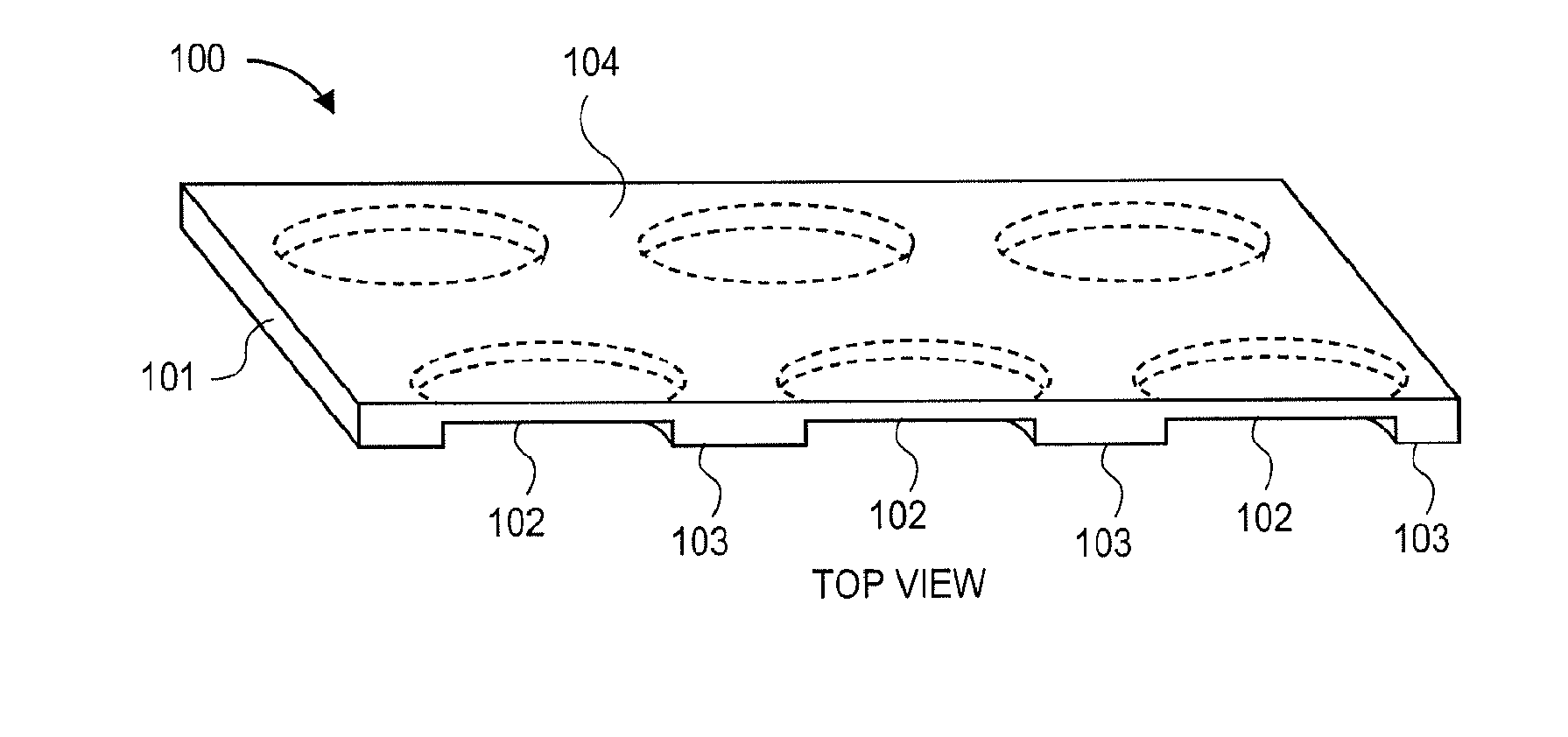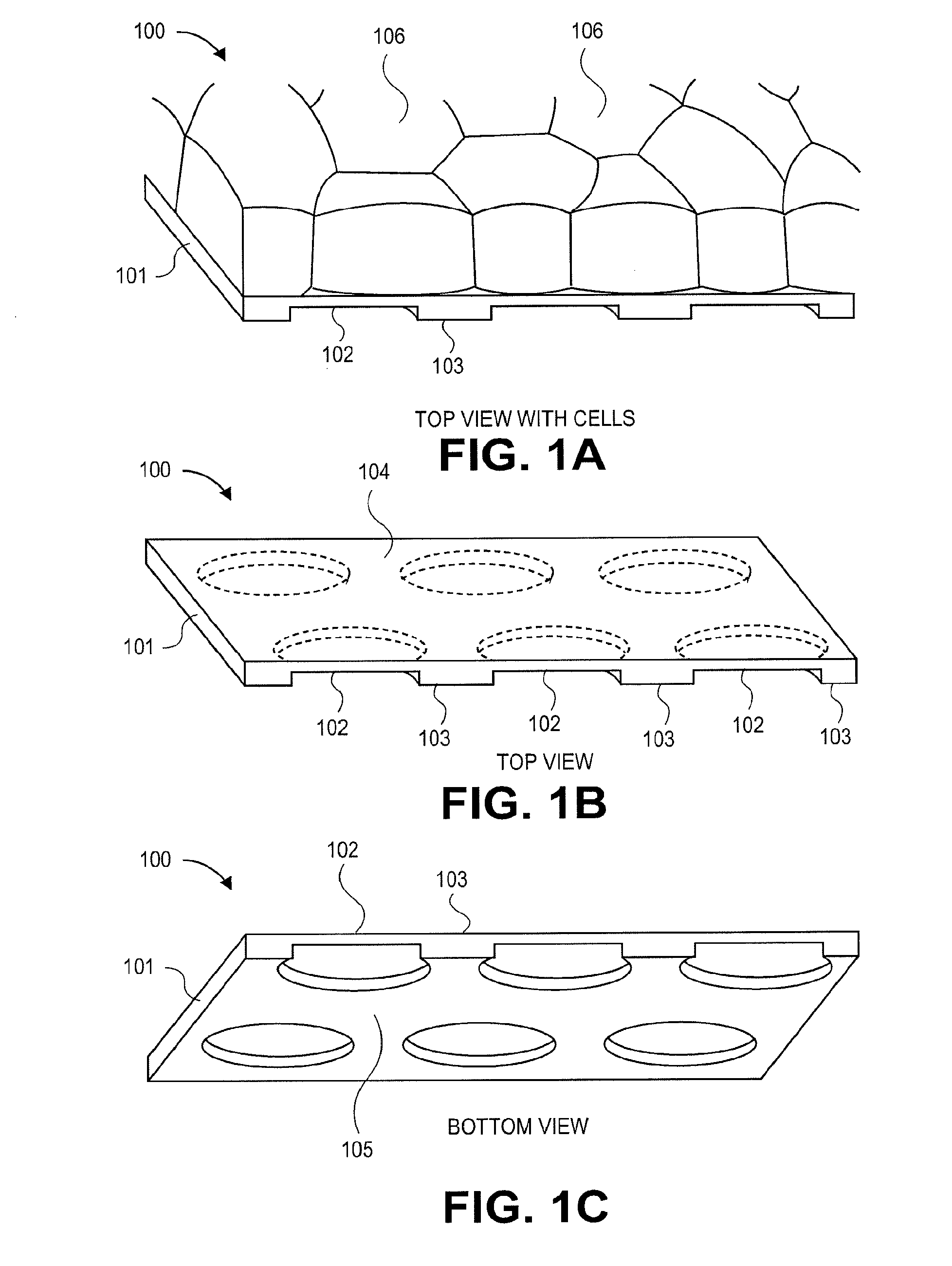3-dimensional parylene scaffold cage
a parylene scaffold and cage technology, applied in the field of 3-dimensional parylene scaffold cages, to achieve the effect of hindering or preventing cell migration
- Summary
- Abstract
- Description
- Claims
- Application Information
AI Technical Summary
Benefits of technology
Problems solved by technology
Method used
Image
Examples
example 2
[0111 illustrates the mechanical strength of the implantable apparatus.
[0112]Example 2 illustrates membrane deflection experiments to evaluate the mechanical properties of the parylene membranes, in terms of their yielding pressures and breakdown pressures. The yielding pressure was defined as the minimum pressure that could create wrinkles and irreversible deformation. The breakdown pressure was recorded at the moment the membrane broke. Compared to the large uniform 0.3 μm parylene film, it was observed that the mesh-supported structure greatly improved the mechanical strength of the entire membrane (Table 2).
TABLE 2Membrane typesRatio ofYieldingBreaking(overall diameter is 1.8 mm)thin partpressurepressureUniform 0.3 μm parylene100%1.50 psi 3.32 psiMesh-supported 0.3 μm53%4.88 psi19.94 psiparylene
[0113]FIG. 16A shows the membrane mechanical property testing experimental set-up. As shown therein, the membrane pressure deflection testing set-up includes a microscope; an exposed memb...
example 3
[0115 illustrates a cell migration experiment of the implantable apparatus.
[0116]Once sealed inside a cage, RPE cells need to develop microvilli to connect to photoreceptors. Therefore, the cage's top cover can have a fishnet-like structure, exposing the microvilli, but blocking the migration of the whole cell. In one embodiment, the gap between the top and bottom was 6 μm, determined by the height of adhering polarized cells.
[0117]To determine the size of opening, cell migration experiments were carried out with the transwell setup. Porous parylene membranes with 8 μm-diameter and 4 μm-diameter holes were fabricated using the method described in (B. Lu, T. Xu, S. Zheng, A. Goldkorn and Y. C. Tai, “Parylene membrane slot filter for the capture, analysis and culture of viable circulating tumor cells”, Proc. of MEMS 2010, Hong Kong, China, Jan. 24-28, 2010, pp. 935-938). Platelet-derived growth factor (PDGF) was added to the bottom well, which was a stimulus of cell migration. Holes w...
example 4
[0118 illustrates assembling of the implantable apparatus.
[0119]In operation for in vitro culture experiments, a parylene ring was first placed on the bottom substrate before cell seeding to protect the assembling region. FIG. 18A show at the beginning, a parylene ring and a plastic ring are used. FIG. 18B shows that after the cells evenly spread on the substrate and get confluent, the parylene ring was removed to expose the non-cell region. FIG. 18C shows that the top or “cover” was assembled to the non-cell region on the bottom using Matrigel (BD Biosciences) as ‘biological glue’. Undiluted Matrigel was used here because it was sticky enough to glue two parylene surfaces together in either wet or dry environment, especially after incubation at 37° C. FIG. 18D shows the culturing process was continued until the cells were polarized with microvilli exposed through the top cover openings.
PUM
 Login to View More
Login to View More Abstract
Description
Claims
Application Information
 Login to View More
Login to View More - R&D
- Intellectual Property
- Life Sciences
- Materials
- Tech Scout
- Unparalleled Data Quality
- Higher Quality Content
- 60% Fewer Hallucinations
Browse by: Latest US Patents, China's latest patents, Technical Efficacy Thesaurus, Application Domain, Technology Topic, Popular Technical Reports.
© 2025 PatSnap. All rights reserved.Legal|Privacy policy|Modern Slavery Act Transparency Statement|Sitemap|About US| Contact US: help@patsnap.com



